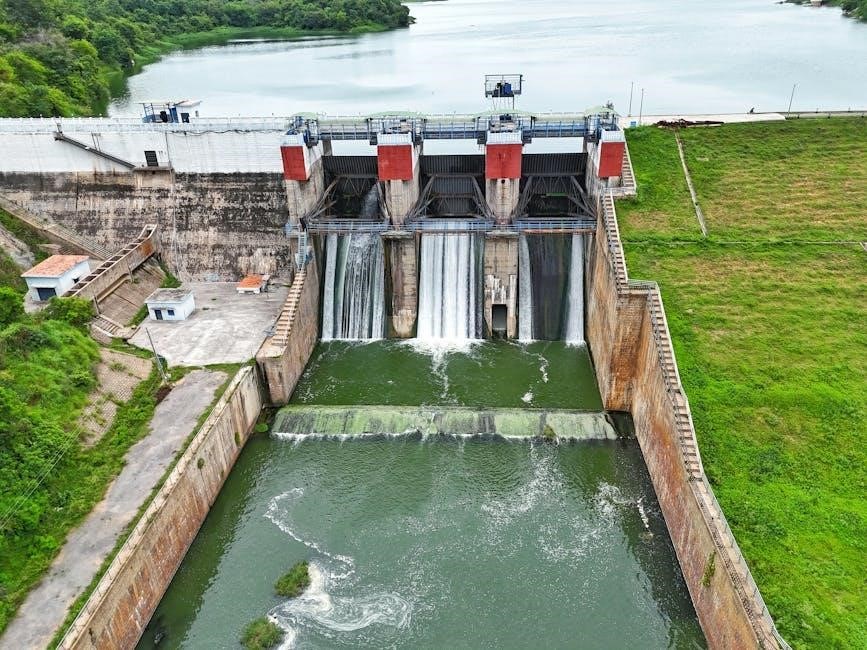manual irrigation system
Manual irrigation systems offer a cost-effective, eco-friendly way to water plants using human effort․ They are simple, efficient, and ideal for small-scale gardening, promoting sustainability and water conservation․
Overview of Manual Irrigation
Manual irrigation involves applying water directly to plants using human effort, offering a simple, cost-effective solution for watering․ Common methods include watering cans, hoses with nozzles, buckets, and hand-operated sprinklers․ This approach is ideal for small-scale gardening, providing precise water control and reducing waste․ It requires minimal equipment, making it accessible and affordable․ Manual systems are particularly useful in areas with limited resources or for gardeners who prefer a hands-on approach to nurturing their plants․ They promote water conservation and sustainability, aligning with eco-friendly practices․
Importance of Manual Irrigation in Gardening
Manual irrigation plays a vital role in gardening by offering precise water control, reducing waste, and promoting healthy plant growth․ It is cost-effective, requiring minimal equipment, and ideal for small-scale or home gardens․ This method allows gardeners to tailor watering to specific plant needs, ensuring optimal hydration․ Manual systems are environmentally friendly, conserving water and energy․ They also provide a hands-on approach, fostering a deeper connection with the garden․ This sustainable practice is essential for maintaining plant health and supporting eco-conscious gardening practices․
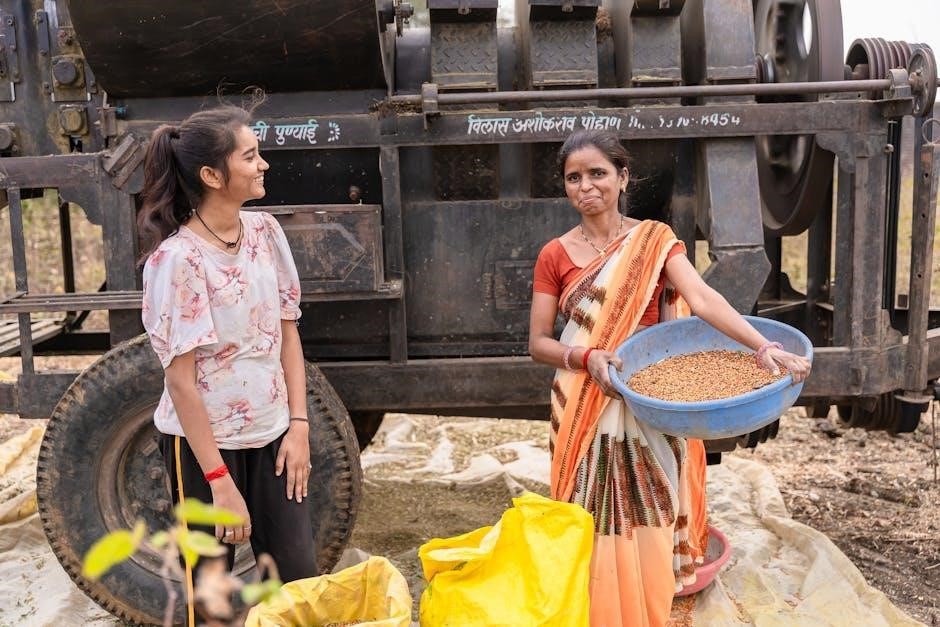
What is Manual Irrigation?
Manual irrigation involves the direct application of water to plants using human effort, offering precise control over water distribution and promoting efficient plant growth through tailored care․
Definition and Basic Principles
Manual irrigation is a method of watering plants through direct human effort, using tools like watering cans, hoses, or buckets․ It relies on physical labor to deliver water precisely where needed, ensuring efficient use of resources․ This approach is cost-effective, requiring minimal equipment, and offers flexibility in water distribution․ It is particularly suited for small gardens or specific plant care needs, allowing for tailored watering schedules and avoiding overwatering․ Manual irrigation promotes sustainability and is a time-tested, eco-friendly solution for nurturing plants effectively․
History and Evolution of Manual Irrigation
Manual irrigation traces its roots to ancient civilizations, where people used simple tools like clay pots and buckets to water crops․ Over time, innovations like watering cans and hoses emerged, improving efficiency․ By the 20th century, handheld nozzles and sprinklers became common, offering better control․ Despite advancements, manual methods remain popular for small-scale gardening and specific watering needs, reflecting their timeless practicality and adaptability․ This approach has evolved alongside human ingenuity, ensuring its relevance in sustainable agriculture and eco-friendly practices․
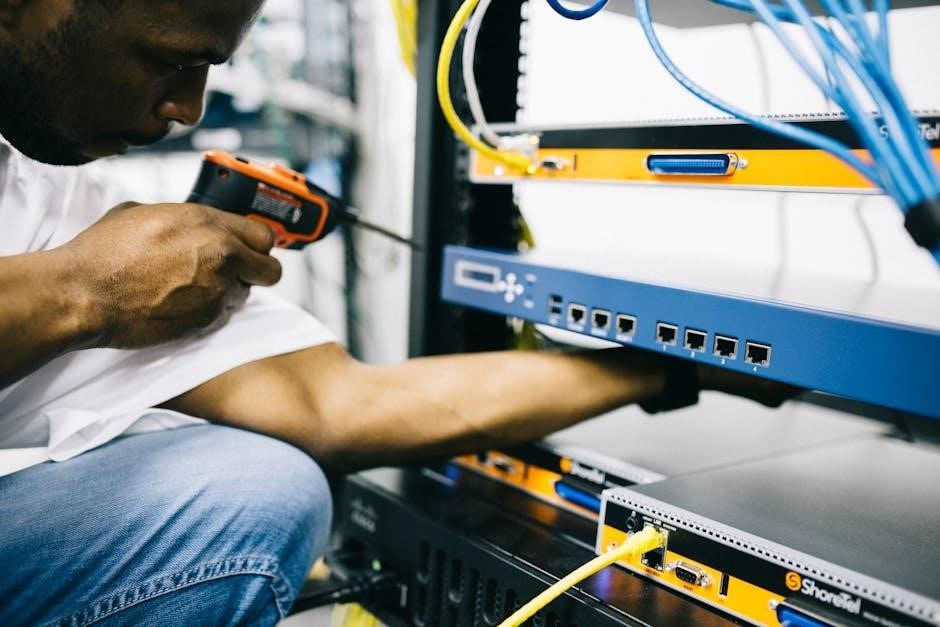
Methods of Manual Irrigation
Manual irrigation systems include watering cans, hoses with handheld nozzles, buckets, hand-operated sprinklers, and gravity-fed drip irrigation, each offering unique benefits for different watering needs․
Watering Can Irrigation
Watering can irrigation is a simple, portable method ideal for small gardens or precise watering needs․ It involves using a manual watering can with a nozzle or rose end to deliver water directly to plants․ This method offers excellent control over water distribution, reducing waste and ensuring plants receive the right amount of moisture․ It’s eco-friendly and cost-effective, as it eliminates the need for complex equipment․ Regular cleaning of the can is essential to maintain water quality and plant health․
Hose with Handheld Nozzle
A hose with a handheld nozzle is a versatile and efficient manual irrigation method․ It allows for precise water control, making it ideal for various plant sizes and soil types․ The nozzle typically features multiple spray patterns, enabling targeted watering․ This system is lightweight and portable, suitable for small to medium-sized gardens․ It promotes water conservation by reducing runoff and ensuring water reaches the roots directly․ Regular nozzle cleaning is recommended to maintain optimal performance and water flow efficiency․
Bucket Irrigation
Bucket irrigation is a simple, low-cost manual method ideal for small-scale farming or home gardens․ It involves filling a bucket with water and using cups or holes drilled into it to distribute water to plants․ This system relies on gravity to release water slowly, reducing evaporation and runoff․ It’s eco-friendly and effective for water conservation․ Bucket irrigation is perfect for targeted watering, especially in areas with limited water supply or irregular plant spacing․
Hand-Operated Sprinklers
Hand-operated sprinklers are portable, manually controlled devices that spray water in a circular or fan-shaped pattern․ Ideal for small gardens or lawns, they are activated by squeezing a handle, releasing water through nozzles․ These sprinklers are easy to use, allowing precise control over water distribution․ They are cost-effective and eco-friendly, making them a practical choice for targeted irrigation․ Regular cleaning ensures optimal performance and prevents clogging․
Gravity-Fed Drip Irrigation
Gravity-fed drip irrigation systems use gravity to distribute water through a network of tubes and drippers․ Ideal for small gardens or terraced landscapes, they rely on a elevated water source, such as a tank or barrel, to create natural water pressure․ This method delivers water directly to plant roots, minimizing evaporation and runoff․ It’s a low-cost, eco-friendly solution that requires minimal equipment and no electricity, making it perfect for manual irrigation in water-scarce areas․
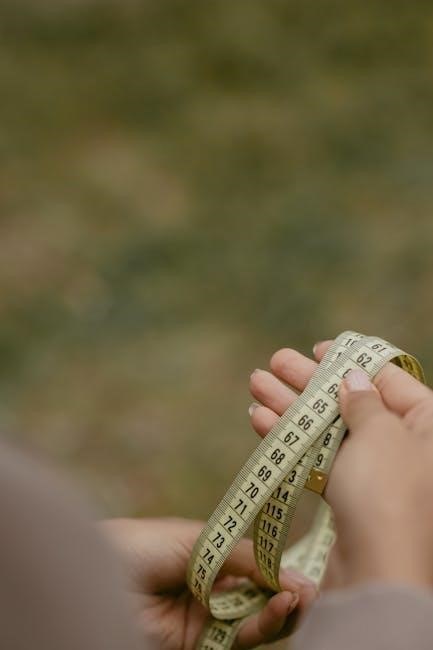
Designing a Manual Irrigation System
Designing a manual irrigation system involves assessing water needs, planning the layout, selecting components, and ensuring proper water flow from the source․ It balances efficiency and cost-effectiveness for optimal results․
Planning the Layout
Planning the layout of a manual irrigation system begins with assessing the garden or field size and plant distribution․ Measure the area to determine the optimal placement of water sources and distribution points․ Consider the natural slope to utilize gravity for efficient water flow․ Identify zones with similar watering needs to ensure even distribution․ Sketch the layout to visualize pipe routes and connections, ensuring minimal waste and easy access for maintenance․ Proper planning prevents overwatering and ensures all plants receive adequate moisture․
Choosing the Right Components
Selecting the right components for a manual irrigation system ensures efficiency and longevity․ Tubing, connectors, and nozzles should be durable and resistant to water pressure․ Opt for UV-resistant materials to prevent degradation from sunlight․ Consider flow rate and pressure compatibility to match your water source․ Choose components that are cost-effective and easy to maintain․ Ensure all parts are compatible with each other to avoid leaks and system failures․ Proper component selection enhances water distribution and minimizes operational challenges․
Water Source and Pressure Considerations
Identifying a reliable water source is crucial for a manual irrigation system․ Consider the water pressure, as it affects flow rate and distribution․ Municipal water, wells, or rainwater can be used, but ensure compatibility with system requirements․ Test water pressure to avoid overloading the system․ Low-pressure systems may require manual adjustments, while high-pressure systems need pressure-regulating valves․ Balancing water source and pressure ensures efficient irrigation and prevents damage to components․
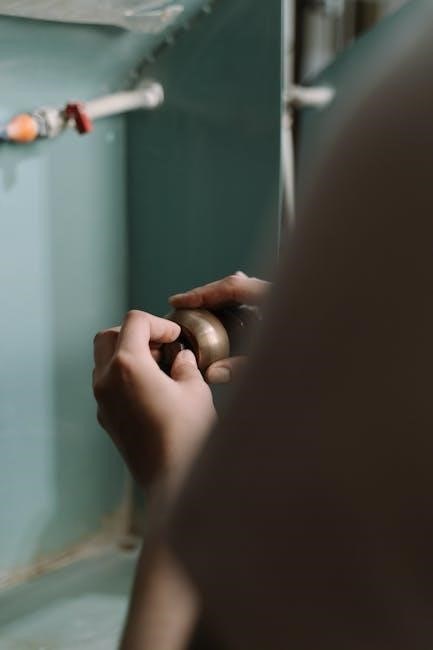
Installation Tips
Plan the layout, level ground, and secure components firmly․ Use a level to ensure even water distribution․ Test the system before finalizing connections to ensure proper function and alignment․
Step-by-Step Installation Guide
Begin by mapping your garden layout and identifying water sources․ Connect the main water supply to the irrigation system, ensuring all fittings are secure․ Lay out hoses or pipes according to your design, avoiding kinks․ Install sprinklers or drip irrigation components at planned intervals․ Test the system by turning on the water supply slowly to check for leaks․ Adjust connections as needed and secure all parts firmly to prevent movement or damage during use․
Common Mistakes to Avoid
When installing a manual irrigation system, avoid overwatering by ensuring proper spacing and flow control․ Incorrect nozzle placement can lead to uneven distribution․ Neglecting to secure connections tightly may cause leaks․ Overlooking the system’s water pressure requirements can reduce efficiency․ Poor layout planning may result in inadequate coverage․ Additionally, avoid kinking hoses, as this restricts water flow, and ensure all components are compatible to prevent system failure․ Regularly inspect for wear and tear to maintain optimal performance․
Maintenance and Repair
Regularly clean filters and inspect hoses for damage․ Replace worn-out nozzles and lubricate moving parts․ Drain systems in winter to prevent freezing․ Check for leaks and tighten connections promptly to ensure efficient water flow and system longevity․
- Clean filters monthly to prevent blockages․
- Inspect hoses for cracks or damage․
- Replace worn-out nozzles or seals․
- Lubricate valves and moving parts․
- Drain systems during cold weather․
Regular Inspection and Cleaning
Regular inspection ensures the manual irrigation system operates efficiently․ Check hoses, nozzles, and connections for wear or blockages․ Clean filters and screens monthly to prevent debris buildup․ Flush the system periodically to remove sediment․ Inspect valves and tightening connections to avoid leaks․ Lubricate moving parts to maintain smooth operation․ Regular cleaning prevents clogs and extends system lifespan, ensuring optimal water flow and distribution․ Schedule inspections seasonally to address issues before they escalate․
- Check hoses for cracks or damage․
- Clean or replace filters and screens․
- Flush the system to remove sediment․
- Inspect and tighten all connections․
- Lubricate valves and moving parts․
Fixing Leaks and Damaged Parts
Identify and address leaks promptly to prevent water waste․ Inspect hoses and connections for cracks or looseness․ Replace worn-out washers or gaskets in faucets and valves․ For small holes in hoses, use waterproof tape or patch kits․ Tighten loose connections with a wrench․ Replace damaged nozzles or sprinkler heads to restore proper water flow․ Regular repairs ensure the system functions efficiently and minimizes downtime․ Keep spare parts on hand for quick fixes․
- Replace cracked or damaged hoses․
- Tighten loose connections securely․
- Use waterproof tape for small holes․
- Replace worn-out washers or gaskets․
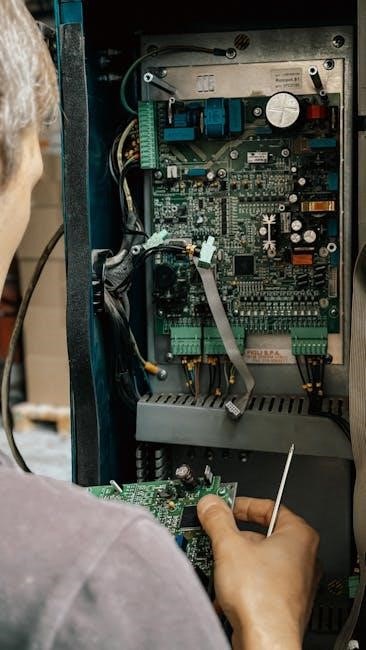
Manual vs․ Automatic Irrigation Systems
Manual irrigation systems offer cost-effectiveness and precise control, ideal for small gardens․ Automatic systems provide convenience and efficiency, better suited for larger areas and consistent watering needs․
Pros and Cons Comparison
Manual irrigation systems are cost-effective, easy to install, and provide precise water control, making them ideal for small gardens․ However, they require physical effort and time, which can be a drawback for larger areas․ Automatic systems, while more expensive, offer convenience and consistency, suitable for extensive landscaping․ Manual systems are eco-friendly due to minimal water waste, while automatic systems may overwater if not properly programmed․ Choosing between them depends on garden size, budget, and personal preference for convenience versus hands-on control․
Cost Efficiency Analysis
Manual irrigation systems are highly cost-effective, requiring minimal upfront investment and low maintenance․ They eliminate the need for expensive automation, making them ideal for small-scale gardening․ Water usage is optimized, reducing long-term water costs․ However, manual systems demand more labor, which can be a hidden expense․ In contrast, automatic systems, while initially pricey, save time and may offer better efficiency for large areas․ Manual systems are often the most economical choice for budget-conscious gardeners seeking simplicity and water conservation․

Best Practices for Manual Irrigation
Implementing efficient watering schedules, regular system inspections, and proper water distribution techniques ensures optimal plant health and resource conservation in manual irrigation systems;
Water Conservation Techniques
To conserve water in manual irrigation, apply mulch around plants to retain soil moisture․ Use a watering can or nozzle to deliver water directly to roots, minimizing runoff․ Water during early morning or evening to reduce evaporation․ Regularly inspect hoses and nozzles for leaks․ Avoid overwatering by checking soil moisture before irrigating․ These practices ensure efficient water use and promote healthy plant growth․
Optimizing Water Distribution
For efficient water distribution in manual irrigation, ensure sprinklers or nozzles are adjusted to cover the target area fully․ Position sprinklers to avoid overlapping or missing spots․ Use low-flow nozzles to deliver water evenly․ Check water pressure to maintain consistent flow․ Regularly clean sprinkler heads to prevent clogs․ This method ensures plants receive adequate water without waste, promoting uniform growth and reducing excess runoff․
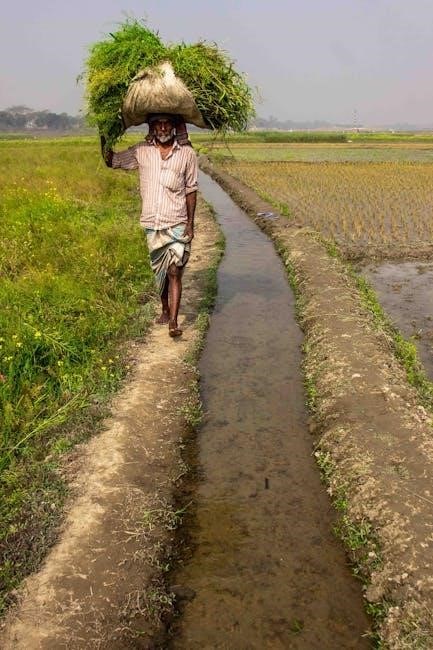
Troubleshooting Common Issues
Identify leaks, check water pressure, and clean clogged nozzles․ Inspect pipes for blockages and ensure proper system maintenance to resolve common manual irrigation issues effectively․
Diagnosing System Problems
Start by inspecting the system for visible leaks or blockages․ Check water flow at the source and ensure all connections are secure․ Test the nozzle or sprinkler for proper function․ If water pressure is low, verify the water source or check for kinks in hoses․ Inspect filters or screens for debris and clean them if necessary․ Look for signs of wear or damage in pipes or fittings that may cause inefficiencies․ Regularly monitoring these elements helps identify issues early, preventing system failure․
Solutions for Poor Water Flow
To address poor water flow in manual irrigation systems, inspect and clean filters or screens to remove debris․ Straighten kinked hoses and ensure all connections are tight․ Check the water source for sufficient pressure or flow rate․ Consider upgrading to a larger diameter hose or nozzle to improve flow․ Regular maintenance, such as flushing the system, can also help prevent clogs and ensure optimal performance․ These steps can enhance efficiency and ensure consistent water distribution․
Future Trends in Manual Irrigation
Future trends include smart manual systems with sensors for water optimization, eco-friendly materials, and innovative designs for better efficiency and water conservation in gardening․
Innovations in Manual Systems
Recent innovations in manual irrigation systems include smart sensors for soil moisture monitoring, eco-friendly materials like sustainable plastics, and modular designs for scalability․ Advances in watering can technology, such as adjustable nozzles and multi-functional spray patterns, improve efficiency․ Additionally, the integration of manual systems with low-cost automation, like timers, enhances water distribution without full automation․ These innovations aim to balance simplicity, cost-effectiveness, and environmental sustainability, making manual irrigation more accessible and efficient for gardeners and small-scale farmers worldwide․
Sustainability and Eco-Friendly Solutions
Manual irrigation systems promote sustainability by reducing water waste and energy consumption․ Eco-friendly solutions include using rainwater harvesting, drip irrigation, and mulching to conserve water․ Reusable materials like metal or bamboo watering cans minimize environmental impact․ Additionally, manual systems avoid the use of electricity, lowering carbon footprints․ These practices align with sustainable gardening principles, ensuring efficient water use while protecting the environment․ Eco-conscious designs and techniques make manual irrigation a greener choice for small-scale farming and home gardens․
Manual irrigation systems offer a simple, effective, and sustainable way to manage water resources, making them an ideal choice for small-scale gardening and farming needs․
A manual irrigation system is a practical solution for water delivery, offering simplicity, cost efficiency, and environmental benefits․ It relies on human operation, reducing reliance on automation․ Suitable for small gardens, it ensures precise water control, minimizing waste․ Regular maintenance and proper design are crucial for optimal performance․ This method promotes water conservation and sustainability, making it an excellent choice for eco-conscious gardeners seeking effective and affordable irrigation solutions․
Final Thoughts on Manual Irrigation
Manual irrigation is a simple yet effective method for nurturing plants, offering control and efficiency․ Its low cost and eco-friendly nature make it ideal for small-scale gardening․ While it requires effort, the ability to tailor water delivery ensures healthy plant growth․ For gardeners seeking a hands-on approach, manual irrigation remains a reliable and sustainable choice, promoting water conservation and personalized care for crops of all sizes․
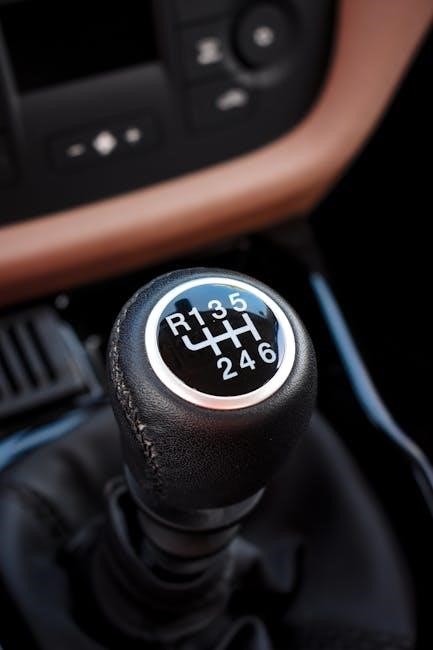
Additional Resources
Explore recommended books, online guides, and tools for designing manual irrigation systems to further enhance your knowledge and implementation of effective watering solutions․
Recommended Reading and Guides
Discover essential books like The New Seed Starter’s Handbook and The Complete Guide to Irrigation Systems․ Online resources such as the USDA’s water management guides and agricultural extension websites provide practical tips․ Utilize free design tools like CAD software for custom layouts․ YouTube channels offer step-by-step tutorials, while forums like GardenWeb allow sharing experiences․ These resources help optimize your manual irrigation system for efficiency and sustainability․
Online Tools for System Design
Utilize online tools like irrigation calculators and garden design software to plan your manual irrigation system․ Websites such as GardenPlan Pro and Landscaping Software offer customizable templates․ Apps like Garden Tags help track water usage and plant needs․ Free tools such as DrawSQL or SketchUp allow you to create detailed layouts․ These resources ensure precise water distribution and efficient system design, making manual irrigation more manageable and effective for your garden or farm․
Glossary of Terms
A collection of key terms related to manual irrigation, such as watering can, drip irrigation, and sprinklers, with clear definitions for better understanding․
Key Terminology Explained
Manual Irrigation: A method where water is delivered to plants manually, without automation․
Watering Can: A portable container with a spout, used to pour water directly on plants․
Drip Irrigation: A system that delivers water drop-by-drop to plant roots․
Sprinklers: Devices that spray water over a garden area․
Gravity-Fed: Systems that rely on gravity to distribute water․
Hand-Operated: Tools or systems controlled manually․
Pressure: Force of water flowing through the system․
Water Source: Origin of water used for irrigation․
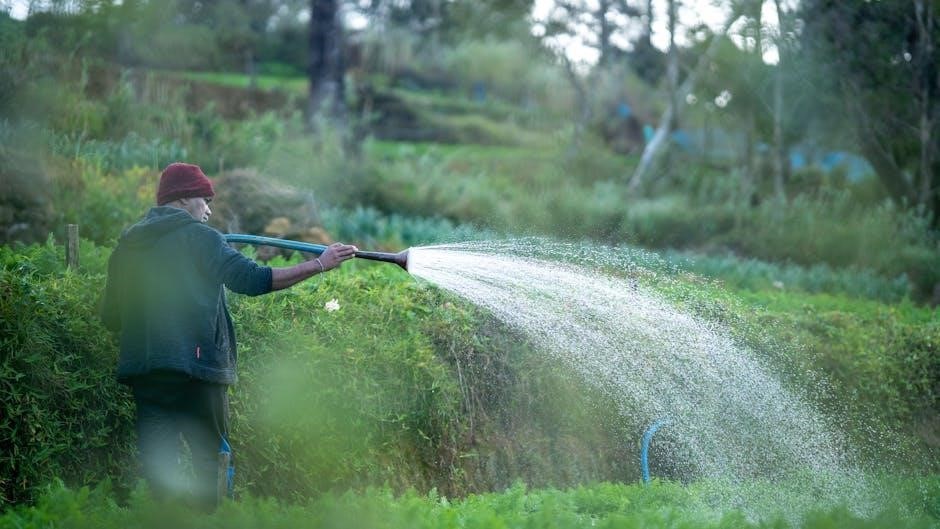
FAQs
- What is manual irrigation? It’s watering plants by hand using tools like cans or hoses․
- Why is manual irrigation beneficial? It saves water and allows precise control․
- How do I start? Choose a method, assess your water source, and begin small․
- Where can I find more help? Check guides or consult gardening experts․
Frequently Asked Questions
- What is manual irrigation? It involves watering plants by hand using tools like cans or hoses․
- Why is manual irrigation beneficial? It offers precise control and water conservation․
- How do I start? Choose a method, assess your water source, and begin small․
- What tools do I need? Watering cans, hoses, or buckets are common tools․
- How often should I water? It depends on soil type, climate, and plant needs․
- Can I save money? Yes, manual systems are cost-effective and reduce waste․
- Is it suitable for all plants? Yes, but adjust water amounts based on plant size and type․
- Where can I find more help? Check gardening guides or consult local experts․
Expert Answers and Advice
Experts recommend regular inspection of manual irrigation systems to ensure optimal performance․ Check for leaks and clean filters to maintain water flow․ Optimize water distribution by adjusting nozzles or drip placements․ Use mulch to retain soil moisture and reduce evaporation․ Consider timer-based watering to avoid overwatering․ Invest in high-quality tools for durability and efficiency․ These tips enhance the effectiveness and sustainability of manual irrigation systems․
